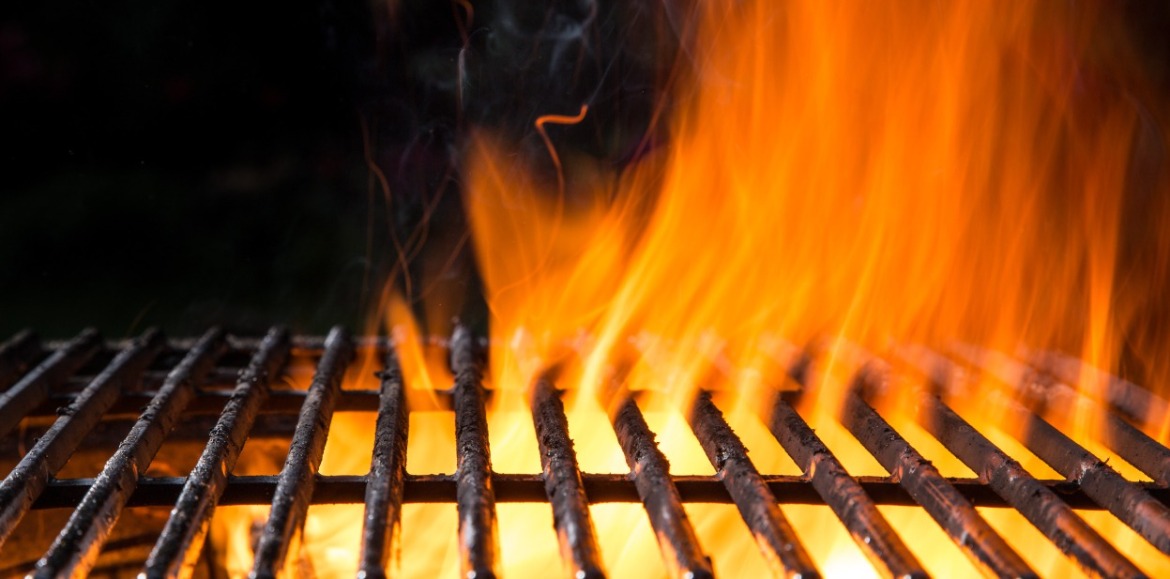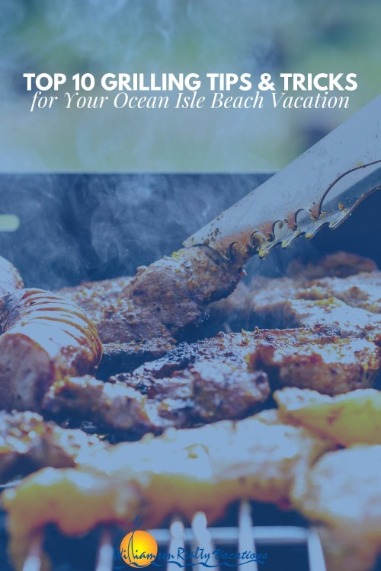
Having access to a grill during your Ocean Isle Beach vacation is a fun and delicious way to enjoy a meal together with your family. Today we’re giving you everything you need to know about grilling and outdoor BBQs during your OIB vacation, so you can plan ahead and know what to expect when you arrive. It all starts with choosing an Ocean Isle Beach condo rental that has a grill or grill access.
Ocean Isle Beach Condo Rentals with Grills
First things first! Here at Williamson Realty Vacations, we have several condo complexes that offer grills for you to use during your stay.Ocean Pointe, Starboard by the Sea & Starboard Townhouses, and Windjammer I & II all have grill access as part of their amenities. If you and your family enjoy grilling out, then take a look at these Ocean Isle Beach rental options.
Town of Ocean Isle Beach Grilling Rules
You may be wondering what the Ocean Isle Beach rules are for BBQ grills and grilling in general. Good question! No fires or grilling are allowed on the beach. The town regulations also do not allow charcoal grilling or other type of open fire on porches, decks, patios, or landings above ground level. Electric and gas grills are permitted only if permanently attached to landing and not covered by any type of roof or awning. You can read all of the Town of Ocean Isle Beach rules and regs here.

10 Expert Grilling Tips & Tricks
1. Getting started
You’ll want to light the grill and close the lid (if it has one) to get the grates hot and bring it up to the desired temperature. A hot grill is what you need to get a good sear on the food while also keeping it moist. It takes 10-15 minutes for the grill to preheat, so plan accordingly. While the grill is hot, it’s also a good time to brush off the grates with a grill brush to make sure they’re clean and ready for use. You can use a balled-up piece of foil and a pair of tongs if you don’t have a grill brush.
2. Oil the grill grates
Oiling the grill grates helps to avoid foods sticking to the grill. The easiest way to do this is to add oil to a folded up paper towel and use the tongs to rub it onto the grates. You can also cut an onion in half, brush it with oil, and use that to oil the grill. Avoid using spray oils. If you prefer not to use oil at all, you can lay a piece of foil on the grill grates instead.
3. Keep a spray bottle handy for flare-ups
Flare-ups happen when you’re grilling, so it’s best to keep a spray bottle filled with water handy to minimize their effect. You don’t want to over-char your food, so spritzing flare-ups with water maintains the heat level while also taming the flames.
4. Avoid putting cold meat on a hot grill
You don’t want to take cold meat and put it right onto a hot grill. Instead, let the meat come to temperature by taking it out of the fridge 15-30 minutes ahead of time. This helps the meat to cook more evenly and gives you a better sear on the meat.
5. Resist moving & flipping the food too much
It can be tempting to keep moving the food around and flipping it over and over while it’s on the grill—but it’s not best practice. Most foods only need to be flipped once. Also resist the urge to press, squeeze or flatten meat while it’s cooking. All you’re doing is pushing out the moisture, juiciness, and ultimately the flavor.
6. Use a meat thermometer
Unless you’re an experienced cook, it is hard to tell the meat’s temperature merely by touching it. (Although if you are interested, here’s how you can do it: Touch the meat. If it’s soft like the flesh between your index finger and thumb, it’s rare. If it’s soft like your cheek, it’s medium-rare, and if it’s firm like your forehead it’s well-done.) A more accurate way for most of us is to do a quick check of temp with an instant read thermometer.
General temperature guidelines are as follows:
- Rare Beef – 125°F
- Well Done Beef – 160°F
- Ground Beef Burgers – 160°F
- Pork – 145°F
- Chicken – 165°F
7. Factor in carryover cooking time
Carryover cooking is a real thing as food will continue to cook after you remove it from the grill. Remember that cooked meat will rise 5-10 degrees after you pull it off the grill, so take that into consideration and plan accordingly.
8. Let all meat rest after removing it from the grill
Allow all meat to rest before slicing into it. Depending on the meat, allow it to rest for at least 5-15 minutes (the larger the piece of meat, the longer the resting time). Resting the meat allows the juices to redistribute throughout the meat for a juicier, more tender piece of meat. Tenting the meat with a piece of foil while it rests keeps the meat warm while the juices are redistributed.
9. Brush sauces on meat toward the end of grilling
If you plan to baste meat with a sauce or glaze, always do it in the last 5 minutes of cooking time if the total cooking time is 30 minutes or less; or the last 15 minutes of cooking time, if the total cooking time is over 30 minutes. Adding a glaze or BBQ sauce, especially one with sugar, too early in the cooking process can cause your meat to burn and stick to the grill.
10. Follow food safety guidelines
Remember to follow basic food safety guidelines just as you would with regular cooking. Wash your hands after touching raw meat. Avoid cross contamination by using separate cutting boards and utensils for raw and cooked foods.Always refrigerate meat while it’s marinating and never baste with the marinating liquid, unless it’s been boiled down to remove all of the bacteria from the uncooked meat.
Do you have any grilling tips to share?
Drop them in the comments below! We love hearing from our readers.



